Magazine
Generation Next

The new generation steps into the spotlight.
|
Senator Satveer Chaudhury represents 70,000 Minnesotans. In 1996, when he was elected state representative, he became the first Asian American member of the Minnesota Legislature and only the fourth Indian American elected to a state legislature in the United States. Four years later, he became the first Indian American senator in history and currently chairs the Environment and Natural Resource Committee.
An avid sportsman, hunter and fisherman, he says of his immigrant family, “We’re Jats. We’re people of the land. My parents immediately wanted to experience all that Minnesota had to offer and when I was only three months old, we were at the headwaters of the Mississippi – camping, fishing and hiking.” His day begins in the Minnesota legislature where 65 senators representing 123 districts, work on passing bills and formulating policy. For him, a typical day includes meeting with constituents and listening to their needs. “My days are a whirlwind of activities that change from minute to minute. One minute I’ll be in session voting on a bill and the next I will be chairing a committee on the environment; the next I will be in a meeting with lobbyists or negotiating a compromise on legislation.” Out in Los Angeles, Russell Peters is taking the stage at a comedy club. As he picks up the mike, the crowd roars in approval. Peters has developed an international fan following. A recent appearance at London’s Shaw Theatre sold out in 48 hours and when his first shows in Sydney and Melbourne were announced, 10,000 tickets were snapped up in less than two days. In 2005, Russell became the first South Asian to headline and sell-out the Apodllo Theater in New York City.
Two very different individuals in two very different professions – yet both are making a mark on America in their own ways. The common denominator is they are both Indians born in the United States. Yes, the children of immigrants are now coming of age. The first generation born in this country to enter and shape American politics, public policy, art and culture in ways their parents could never have dreamed or imagined.
M. Night Shyamalan churns out multimillion dollar blockbusters in Hollywood. Michael Rao is president of 28,000-student Central Michigan University. Pulitzer Prize winner Jhumpa Lahiri is vice president of PEN. Dr. Sanjay Gupta is a medical star on CNN. Tony Kanal makes beautiful music with No Doubt and Laveen Naidu is executive director of the Dance Theater of Harlem. All of them, born under foreign skies in America, Britain or South Africa are enriching the landscape around them. For the immigrant strivers who came in the 1960s and 1970s, the American Dream was just to get a foothold in America and be economically comfortable. Little could they have imagined that their children would walk out of the magic circle, the proscribed Lakshman Rekha of doctor-professor-engineer and create new possibilities: that Sunita Lyn ‘Suni’ Williams, daughter of a Gujarati immigrant born in Euclid, Ohio, would become a NASA astronaut, the second Indian woman to fly into space. She currently lives and works as flight engineer aboard the International Space Station and will be in space for the next six months.
The immigrant generation came to America with apprehension and hesitation. Yes, they may as well have been heading for outer space – America seemed so far away and so alien. They were the wrong color, had the wrong accent and the wrong looks. Dilip Singh Saund, who rose to become a U.S. Congressman, could not get a high school teaching job even with a Ph.D. from the University of Berkeley and had to resort to farming in the Imperial Valley in California. Indian immigrants viewed themselves as do din ke mehman – visitors for two days – always aiming to make their fortune and return to the land of their birth. They did not get involved with the inner working of America, often creating their own Little Indias, cocooned within their own circles. For their children born on American soil, this Babel of many disparate tongues is their language, and all the facets of America – warts and all – belong to them. They are not here as green card holders, H-1 or B-1 transients or travelers from another dimension, but full-fledged citizens of America with the right to love it or loathe it – because it is theirs.
They have no past memories of learning the Hindi alphabet or listening to Hindi filmi songs as they strolled in the bazaar. Their first knowledge was gained in American schools, pledging allegiance to the American flag. Their history lessons covered not Gandhi or the Indian freedom struggle, but George Washington and the civil rights movement. The dosa breakfast, palak paneer dinner at home and the color of their skin or Indian eyes notwithstanding, the larger world claimed them more, immersed as they were in American movies, rock music, the seductive mall culture, fast foods and Oprah. So it is no surprise that their career choices are often vastly different from their parents’ generation and their relation to America more assertive.
Author Mira Kamdar is both participant and observer of the phenomenon. The daughter of an Indian father and a Danish American mother, she represents a growing segment of the second generation that share two cultures. Kamdar says that when her father came to the U.S. to study in 1949, immigration from India was very limited. He ended up pursuing two sequential degrees just to stay in the country on a student visa. His second degree in aeronautical engineering got him a job with Boeing and the family settled in Seattle, Wash. “I remember when I was growing up in Los Angeles in the 1960s and 70s, there were so few people of Indian origin,” says Kamdar. “The only other Indians I saw were family members we were sponsoring for visas or a handful of professionals whom we knew through my father’s work. There were no Indian restaurants, grocery stores, video rental stores or movie theaters.
“Now, there are thriving immigrant Indian communities across the country. This extends to college campuses where second generation Indian Americans have forged powerful cultural and political organizations. And Indian Americans are exerting political clout on the local, state and national level as never before.” To the immigrant generation, politics extended as far as photo-ops and political fundraisers. Actually standing for office was entirely out of the question; a vast majority were not even citizens. Not so their children who are active in organizing voting drives to volunteering for candidates to interning with Congressmen. This is their country and they have a stake in it. The most striking example is Bobby Jindal, who at age 33 became the first Indian American, born in America, to be elected to the House of Representatives from Louisiana in a landslide with 78 percent of the vote.
Jindal has always been a high achiever, a wunderkind. He graduated from Brown University with honors in biology and public policy and was also a Rhodes Scholar with a graduate degree from Oxford University. You can almost trace the trajectory of his rising star. He served as Secretary of the Louisiana Department of Health and Hospitals, and at age 25 became the president of the University of Louisiana System and even ran unsuccessfully for governor of Louisiana. He recently announced his decision to run again and this time the betting in the state is that he will likely become the first Indian American governor. The political role model for many second-generation Indian Americans would have to be Kumar Barve (D), majority leader in the Maryland House of Delegates, who in 1990 became the first Indian to be elected as a state legislator and represents a district with a population of roughly 110,000 in Montgomery County, Md. Ask Satveer Chaudhury what special qualities he brings to the Senate and he says: “I think any minority certainly brings a diversity of perspective to an organization. In my case I definitely brought a differing perspective on information technology and globalization, immigration and civil rights.”
Chaudhury, whose family came from Haryana in 1966, grew up in Minneapolis. His father, a veterinarian, came for a master’s degree and then joined the U.S.Department of Agriculture. He says, “I think there were definitely conflicts between our cultural upbringing and mainstream upbringing – conflicts related to American traditions, holidays, dating language. I think all of those things were in play in my household.” His brother Ravi is a major in the United States Air Force driven by his desire to be an engineer, a pilot and to serve his country. Major Chaudhury has served in Iraq and is currently stationed in New Jersey. Indians are now the sixth largest Asian group in the U.S. armed forces. Could his parents have imagined that one son would be a senator and another a major in the army? Says Chaudhury: “They were just hoping one of us would become a doctor! My sister did become half a doctor – she is a doctor of biology!” Sunaina Maira, associate professor of Asian American Studies at the University of California, Davis, is author of Desis in the House: Indian American Youth Culture in New York City. Herself a second generation Indian American, she has studied the age group now entering the workforce. She says, “Now they’ve graduated, of course, and moved on to different fields and they haven’t been tracked, but the most visible public examples are there for all to see. Second generation desis are moving into political office or moving up the ranks of public policy.
“I think there are different strands in terms of the avenues. Apart from the example of people participating in electoral politics, we also have examples of people who are moving into politics outside of electoral politics – who are working in nonprofit organizations, community groups, education or the arts and I think what it adds up to is what we were seeing anyway when the generation was younger. I think it’s very diverse range of paths this generation is following. Here people make careers of doing what they love.” They are breaking boundaries in arts and entertainment. Not satisfied with stereotypical roles of taxi drivers, swamis and 7/11 owners, they are pushing the envelope. The arts and entertainment world has so many well-recognized Indian names now: Norah Jones, born Geethali Norah Jones Shankar, has mesmerized audiences with her brand of pop music while her half-sister Anoushka Shankar has internationalized the sitar. You have Manu Narayan taking the Broadway stage for Bombay Dreams, Suphala playing Indian tablas for mainstream audiences or Saira Mohan hosting coverage of Entertainment Tonight’s “Victoria’s Secret Valentine’s Day Special.” Sameer Samuel Bhattacharya is one of two guitarist in the Texas alternative band Flyleaf; Aasif Mandvi, who appears on The Daily Show, has done everything from movies to theaters to an Obie winning one man show. They are even becoming spunky enough to grab their 15 minutes of fame on the hot new genre of reality television. Recently the Indian brother-sister duo of Sanjaya and Shyamali Malakar crooned on American Idol. Their faces are becoming a fixture on mainstream television – Zain Verjee, Sumi Das, Aneesh Raman, Ali Velshi, Mish Michaels metoreologist for the Weather Channel, Uma Pemmaraju on Fox News, and Sukanya Krishnan, on CW11 Morning News, to name a few. Rena Golden is senior vice president at CNN International. Their success stories are even more surprising considering that their parents often resisted their children’s artistic endeavors. Many successful artistes and actors started out as pre-medicine students and it was probably their American-fertilized individuality and outspokenness that helped them overcome parental objections.
The film director Nisha Ganatra recalled in an interview that when her parents heard about her filmmaking aspirations, “they had the same reaction as if I had said I wanted to be a prostitute.” They did come around and Ganatra studied film-making at New York University and has made such critically acclaimed films as Chutney Popcorn and Cake. She once said, “Representation is so necessary for cultural transformation. I was doing so much activist work, and things were taking so long to change. I was so impatient. I thought, ‘Wow I could just make one film and this message would reach so many more people so much faster.’ It’s so important to see images of yourself in film and television. It seems so basic, but you grow up feeling invisible in this country because there is a lack of images. I wanted to change that.” The second generation is developing the confidence to branch into everything from science to fashion to the arts. Remember Alpana Singh, the world’s youngest master sommelier? We can all drink to that! The professions these young South Asians are pursuing probably give some parents migraines – from acting as bouncers in night clubs to waiters in restaurants, but which are perfectly normal occupations for people growing up in this country. Ayesha Hakki, editor of the bridal magazine Bibi says: “They acknowledge their South Asian heritage, but are not necessarily defined by it. I have seen an Indian bartender, a Pakistani bikini model, guitarist, artist, and everything in between. And when you ask them why they do what they do, their answer is almost always about how much they enjoy their jobs rather than, ‘Oh I am trying to be controversial.’
Hakki adds, “When I was in college, I worked at a retail store. It was the normal thing to do, everyone did it. But had I been in Pakistan, I would never dream of doing such a thing. There are more opportunities to do things in this country. Even in my profession, when I first was working for Ladies’ Home Journal, I was the only South Asian in the mainstream New York magazine circuit. I never saw anyone at any events, and there weren’t even any South Asian sounding names on the other magazine mastheads. Now, as the second generation is growing up, it’s much more commonplace to see, say a Patel or a Khan, working at some publication.” With Bollywood blood flowing in their veins, it is not surprising that young Indians are enamoured by the television movie industry – Naveen Andrews, Sarita Chowdhury, Ajay Naidu, Kal Penn, Aasif Mandvi, Sheetal Sheth and Purva Bedi. The most dramatic success is that of M. Night Shyamalan, who gave up pre med to become one of Hollywood’s most sought after directors, although his star has dimmed recently after bombing with his latest film Lady in the Water. Penn is a quick-change dynamo, changing identities super-quick from the wacky Kumar of Harold and Kumar Go to White Castle to the dastardly Lex Luthor of Superman. Asked if the struggle for roles ever ends, he says: “It changes in scope. When I first started out you get your headshots and it’s literally knocking on doors for a one-line part. And after you get your line, you get into the Union, and you go after the two-line parts or the five-line parts and you start building up the ladder that way. But at each step of the ladder, you still have to fight for those roles and be vigilant about what’s out there. So it’s obviously a different type of looking for work, but it still exists in a different form.”
“Second generation Indian Americans are definitely creating their own American experience,” says Mira Kamdar. “Most interesting to me is the flowering of talent among second generation Indian Americans in non-technical fields, such as media, entertainment and the arts. There seems to be a strong drive to express the unique experience second-generation Indian Americans have, and the number of actors, playwrights, movie directors, novelists, journalists and musicians among the second generation is really striking to me, especially when contrasted to the doctors, engineers and college professors that characterized the early immigrant generation.” She adds, “There is also an emerging working-class element, some of which finds expression in Indian-Hip Hop fusion music by groups, such as Karmacy in San Francisco, as the profile of immigrants from India includes more and more less skilled immigrants than were allowed into this country in the first wave. On the other end of the scale are the super successful entrepreneurs and financiers who have made enormous fortunes yet many of whom are seeking new ways to do business inspired, I believe, by their Indian cultural background.” They are also redefining traditional Indian jobs or adding additional layers to them. Take Dr. Sanjay Gupta, a practicing surgeon, who is CNN’s principal health correspondent. Dr. Atul Gawande is probably every Indian immigrant parent’s dream – balancing the triumvirate of a medical career, writing and sweetening it further with half a million dollar Genius Grant from the MacArthur Foundation! Gawande, an assistant professor of surgery at Harvard Medical School, is author of Complications: A Surgeon’s Notes on an Imperfect Science, which has been published in 17 languages in over 100 countries.
Second generations writers are pushing the boundaries of non Indian genres. Sujata Massey, who is of Indian and German parentage and married to a Japanese, is author of the acclaimed Rei Shimura mystery novels. She explains: “I purposely chose to write about a foreigner who can almost pass for Japanese, because that was my experience, and I thought it would be helpful for an amateur sleuth to be able to mask her identity when she needs to. Rei Shimura is multicultural; born in California, she has a Japanese father and an American mother. My protagonist speaks much better Japanese than I do, although I am still studying.” Journalism schools are full of second generation Indian Americans and many have gone on to prominent careers, such as Rajiv Chandrasekaran, assistant managing editor of The Washington Post and author of the critically acclaimed Imperial Life in the Emerald City: Inside Iraq’s Green Zone. Conservative pundit Ramesh Ponnuru is senior editor for National Review magazine and author of The Party of Death: The Democrats, the Media, the Courts and the Disregard for Human Life. Even the elusive sphere of sports has been breached. Mohini Bharadwaj is the first Indian American Olympic medalist in gymnastics and was an 11-time All-American during her NCAA career; Sanjay Beach is a former NFL wide receiver for the San Francisco 49ers and Green Bay Packers.
Brandon O’Neil Chillar, National Football League linebacker for the St. Louis Rams, is a powerful green-eyed brown skinned 6 ft.-3 in Indian American. His father, Ram Chillar, came from a village near New Delhi and worked his way up from a car-wash to owning, what else, a 7/11 franchise. Brandon, whose mother is of Irish-Italian heritage, was born in Los Angeles in 1982. After the family moved to San Diego his encounters with other Indians were rare, nor has he ever travelled to India. Brandon has no struggle with his identity, which is, “I would say American, really.” As an Indian, Chillar is a rarity in professional sports. “I think it was really my work ethic which got me here – and anybody can have that. I was blessed with the height but even with that, I had to work really hard.” He says many people tried to dissuade him from going into sports. “I worked really hard. America has many opportunities, but it is for the individual to make the right choice.” Indian Americans may be an anomaly in sports, but they are turning up in droves in the stand up comic business. At least half a dozen performers from Dan Nainan to Vijai Nathan, all born in this country, are wringing humor out of their cultural mix.
The stand up comic Russell Peters is especially adept at making people laugh at their ethnicity, no matter where they are from. Peters’s new DVD and CD Outsourced was taped before a sold out audience at the Warfield Theatre in San Francisco. His hreflections on growing up brown has gone Five Times Platinum in his home country of Canada. Peters recently relocated to Hollywood where he’s working on developing a new sitcom project, but he is firm about the kind of roles he will do: “Developing a TV pilot is great, but I’m never accepting typecast roles. If they offer me a million dollars to do a shuffling, bumbling Indian guy they can keep the million bucks. I like the money, but I’d do it without the money and I have done it without the money. The real reward is seeing the look of happiness on people’s faces when they hear me talking to their experiences in a way that nobody’s ever done before.” By far the arena the new generation is distinguishing itself most from the immigrant generation is public advocacy and social services. Playing a role in the transformation of America is viewed by this young generation as a birth right, while immigrant Indians saw themselves as outsiders. Nor is their emphasis just on connections with India, as was the case for those in the first generation who dared venture into this realm. This land is their land and they are out to make a difference.
Preeta Bansal, now in private practice, served as solicitor general of the State of New York, a position she held in then New York Attorney General Eliot Spitzer’s administration. Maya Harris is director of the Racial Justice Project at the American Civil Liberties Union (ACLU) of Northern California, where she directs and coordinates the project’s litigation and grassroots organizing work, pushing for the elimination of racial disparities in the criminal justice system and promoting educational equity in California public schools. Harris also has the distinction of being the youngest dean of a law school, when at the age of 29 she took the helm of the Lincoln Law School of San Jose. There’s San Francisco District Attorney Kamala D. Harris, a veteran prosecutor who’s developed a reputation for combating violent crime, sexual exploitation of children and elder abuse; Neal Katyal, lawyer and professor of law at Georgetown University, lead counsel in the Supreme Court case Hamdan v. Rumsfeld on Guantanamo Bay detainees; and Sabita Singh, assistant U.S. Attorney in Massachusetts. Maira sees a very articulate group of young Indians in grassroots organizations committed to bringing about social change. Having grown up in America, many of them share a healthy cynicism of campaign finance and are fighting for minority rights and racial justice. “A whole generation of South Asians are now working in non-South Asian organizations, working in immigration, rights organizations, education and the arts,” she says. “I mean these are people who are not necessarily in Indian spaces, but are in multiethnic spaces and feel quite comfortable with themselves and they feel they can make an intervention in a broader sense.”
In the post 9/11 world, the younger generation is far more assertive about their civil and political rights than their parents, marking a shift in the power balance between the first and second generation. Maira says, “This happens in every immigrant community. There’s always a conversation over leadership and I think at some point it will happen in the Indian American community – in fact, it’s already starting to happen.” Indeed, the organizations that responded to profiling in the aftermath of 9/11 were founded by the younger generation – SALT in Washington DC, South Asian Committee for Human Rights in Austin, South Asian Network in Los Angeles, DRUM and Breakhrough in New York.
Says Maira, “They take a somewhat identifiable American approach in terms of civil rights in context of the U.S., focusing on domestic politics. Different paths are being forged, bringing different nationalities under the South Asian rubric. They are stepping up and taking a leadership role, although there’s nothing on a national scale as yet.” Senator Chaudhury says the second generation blends the best of both worlds: “We certainly, by and large, carry on the importance of education and hard work in our lives in whatever careers we have chosen. And from the American culture we gain a sense of freedom to succeed at whatever we choose. This is America, where you can succeed in whatever you put your mind to.”
|

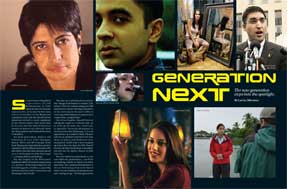
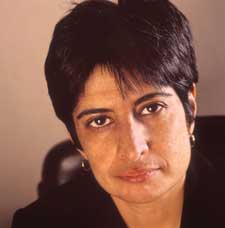
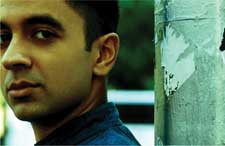


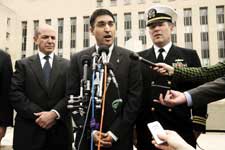


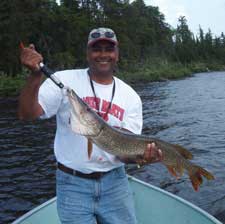

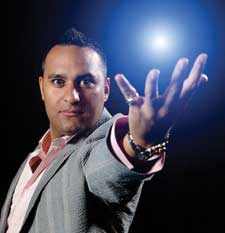

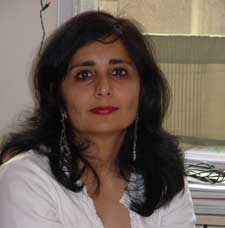
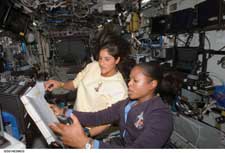
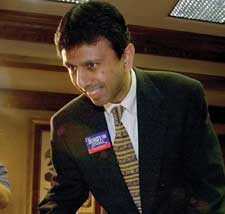

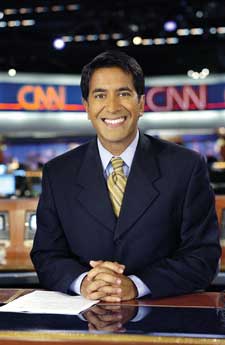
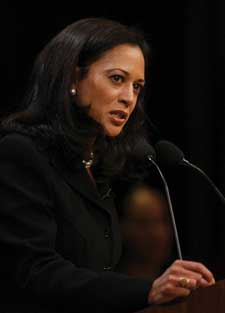
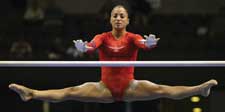
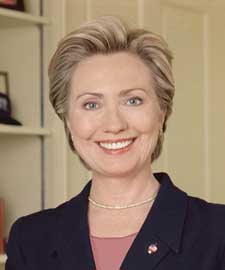
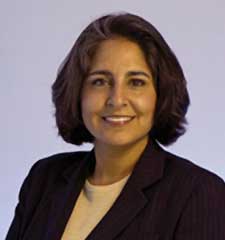
You must be logged in to post a comment Login